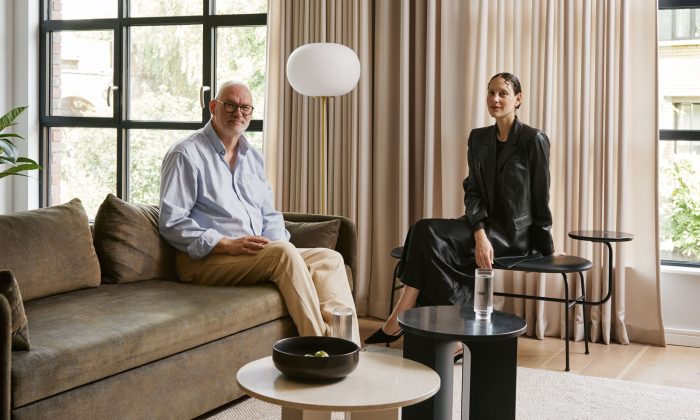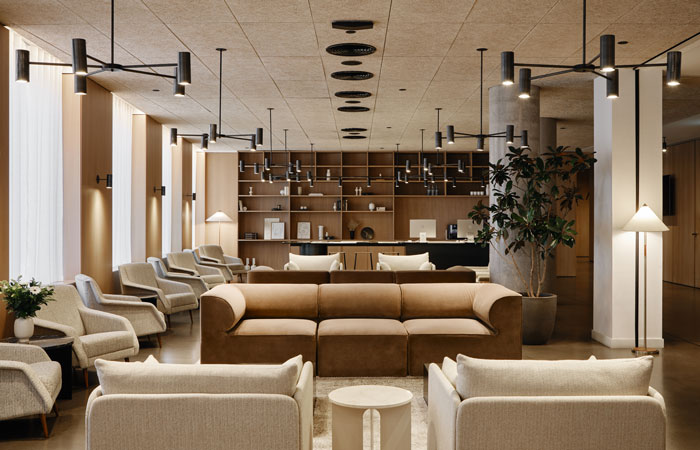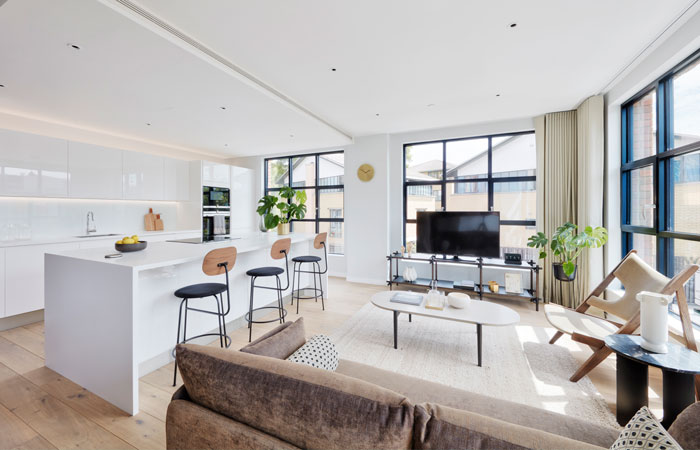Unlocking Sweet Dreams: Creating Ideal Sleep Spaces for Hospitality Success
Design Insider acknowledges the pivotal role that high-quality sleep plays in ensuring that the hospitality sector thrives. In a fascinating conversation, Design Insider’s Editor, Alys Bryan, explores the significance of creating environments conducive to a restful night with sleep expert Dr Neil Stanley and Yaara Gooner, Head of Design at STAY.

Sleep expert Dr Neil Stanley and Yaara Gooner, Head of Design at STAY
While scientists continue to unravel the mysteries of sleep, one thing is certain: a good night’s rest contributes to heightened energy levels and improved daily functionality. The documented health advantages, spanning enhanced focus, productivity, weight maintenance, and heart health, underscore the importance of quality sleep. We engaged in a discussion with Dr Neil Stanley, a seasoned sleep expert with three decades of experience, and Yaara Gooner, Head of Design at STAY. Together, they delved into the elements that make for an ideal environment promoting undisturbed rest.
During humans’ evolution Dr Neil Stanley, an independent practitioner in the field of sleep for thirty years, explains that our needs were much simpler: our ancestors would need somewhere safe to retreat to, to hide away from predators. “In order to not be disturbed, we need to be secure, to be free from threats, because that could potentially end badly for us. Any noise or disturbance and our brain is instantly telling us we must run away.”

STAY Camden
These days he adds, the threat doesn’t come from wild animals “There aren’t Sabre toothed tigers roaming around London anymore!” he jokes. Nonetheless that need for security remains away from modern-day distractions. Whereas in centuries past there was no point staying awake as there was nothing to do and it was expending energy, time, and money, in the twenty-first century there is simply so much to occupy us, “The big change is the amount of information that we are exposed to: that has massively increased,” he confirms.
With so many things to compete with our sleep from social media scrolling to societal worries about everything from the cost of living to climate change, creating an environment that is calm and conducive to dropping off is crucial, Stanley goes on to explain. In a hotel room, one might experience curtains that don’t meet in the middle, the whir of the minibar fridge or noisy air conditioning that might be set at the higher than optimal temperature for sleep of between 16 and 18 degrees. “The other big problem is sound attenuation between rooms and also noise from the corridors such as raised voices and doors slamming.”

STAY Camden, Lobby
“If you have a strong narrative from the beginning, it will always thread through no matter what you do and no matter what hiccups you experience.”
By contrast, the design philosophy for hospitality environments has changed too, with much more of a focus on creating calm, comfortable spaces. Yaara Gooner, Head of Design at serviced apartment concept STAY’s explains her human-centric design sensibility which bring a certain simplicity. “Sleeping is something that is very subjective: everyone needs a different environment to be able to fall asleep. What we can do is provide a platform for you to customise your environment so you feel safe, you can relax, and which reminds you of home.”

STAY Camden, Lobby
She continue:
“Personally, I like to sleep with the window open to feel a cool breeze on my face, but different people prefer different temperature. Lighting is important: blinds that enable guests to have a bedroom where the light is completely blocked out with just a small light for reading before bed is a great idea. To get a good night’s sleep you need to be able to completely relax and that’s why I picked out some really calming earthy tones for the STAY interiors. In a lot of hotels, the design is so busy that you don’t feel relaxed enough to sleep. Our bedrooms are very simple, very minimal, very clean in terms of aesthetic.”
Every last detail is important from easily navigable light switches and heating to the textures featured in the interior design. Natural materials such as timber and stone are often thought to be conducive to relaxation when required as well as a place to live and work away from home.

STAY Camden
Neil Stanley explains that countries and cultures have different approaches to beds and bedding, from the wooden pillows of ancient Egypt to today’s sprung beds stuffed full of wool, cashmere and horsehair favoured in the UK, America, and Australia to the futons of Japan. He says that investment in making the bedroom a sleep optimised environment is key, “You’re going to spend more time in your bedroom than anywhere else. Thirty three percent of your life is spent there after all.”
This type of investment is the thing that people will remember, Dr Neil Stanley says, “If you don’t have a kettle in your room, well you can go to Starbucks. You might not like the restaurant, the gym, the swimming pool, the health club but if you go somewhere and you cannot sleep, I guarantee you will never go back to that property. No matter how expensive or how good the hotel is, you will never return!”

STAY Camden
In conclusion, Design Insider’s commitment to understanding the significance of quality sleep is evident in the insightful conversation with Dr Neil Stanley and Yaara Gooner. Their expertise sheds light on the essential elements that contribute to creating a sleep-optimized environment, ensuring the thriving success of the hospitality sector.




